#cloud transformation solutions
Explore tagged Tumblr posts
Text
#cloud computing and security challenges#cloud migration challenges#cloud transformation solutions#integration of legacy platforms#it cloud services#legacy system integration
0 notes
Text
At AQe Digital, we leverage cutting-edge technologies and our 27+ years of extensive experience to deliver goal-oriented digital solutions tailored to industry-specific needs.
✅ 650+ highly skilled professionals driving innovation and excellence.
✅ Industry-focused solutions designed for maximum impact.
✅ Quick collaboration, agile development, and reliable support for seamless execution.
#Digital Product Engineering#Digital Transformation#Enterprise Solutions#Next-gen Tech#Cloud-based ERP solutions#Custom Product Development#Online Retail Solutions#Apps & Integrations
2 notes
·
View notes
Text
Embracing Agility: How Cloud Architecture Design Transforms Businesses
Introduction to Cloud Architecture In the contemporary landscape of technology, businesses are increasingly reliant on cloud services to propel their operations forward. Cloud architecture design has emerged as a pivotal element in this domain, offering scalable, flexible, and secure infrastructures that cater to diverse business needs. Crafting an efficient cloud architecture involves strategic…
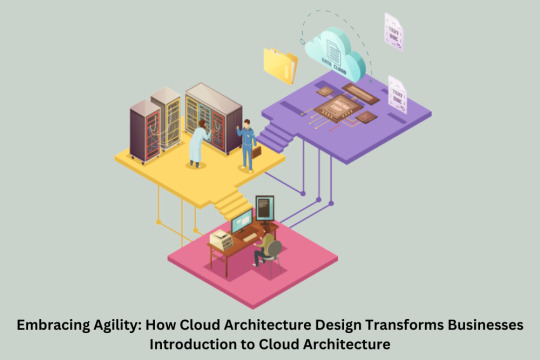
View On WordPress
#Adaptive Cloud Solutions#Agile Cloud Solutions#Agility in Business#Business Transformation#Cloud Architecture Design#Cloud Infrastructure Evolution#Cloud Technology Impact#Digital Transformation Strategies#Embracing Agility#Future of Cloud Architecture#Innovations in Cloud Design#Strategic Cloud Implementation#Transformative Business Practices
2 notes
·
View notes
Text
High‑Speed and Secure Access Network Solutions – Esconet Technologies
Esconet Technologies offers comprehensive Access Network solutions tailored for enterprise environments. Their network infrastructure suite features high-speed copper and optical fiber connectivity (1 Gbps–100 Gbps), a multilayered design following core/distribution/access best practices, IPv6 readiness, Wi‑Fi 6/6E wireless, cloud-managed systems, advanced security (firewalls, IPS, VPNs), and deployable satellite broadband for remote locations. Partnered with top OEMs (Cisco, Arista, Juniper, Dell, HPE), Esconet ensures scalable, secure, future-ready digital transformation networks. For more details, Visit: Esconet's Access Network solution Page .
#access network solutions#enterprise networking#fiber optic connectivity#high-speed internet infrastructure#Wi-Fi 6 deployment#Wi-Fi 6E network#IPv6 network architecture#cloud-managed networking#enterprise wireless solutions#secure network infrastructure#network security solutions#VPN and firewall services#satellite broadband connectivity#digital transformation infrastructure#Esconet Technologies#copper and fiber network design#scalable network solutions#IT infrastructure services#enterprise IT solutions#smart campus networking
0 notes
Text
#Cloud Consulting Services#Cloud Strategy and Transformation#Digital Transformation Strategy#Cloud Migration Experts#Enterprise Cloud Adoption Services#Cloud-Native Application Development#Digital Transformation Consulting#Custom Web Development Company#Enterprise Content Management Solutions#Cloud-Native Development Services#Product Engineering Services#technology#digital transformation#successive.tech#successive digital#artificial intelligence#customer experience#techblog#customer experience consulting company#blog#customer experience transformation company
0 notes
Text
In today’s digital-first world, businesses are under immense pressure to optimize operations, reduce costs, and improve partner communication. EDI Software Solutions have emerged as the backbone of digital transformation, enabling secure and standardized data exchange across systems and partners through electronic data interchange. From healthcare EDI to supply chain automation, the scope and relevance of EDI systems are expanding fast.However, not all EDI solutions are created equal. The right EDI tool can make a monumental difference in efficiency, compliance, and collaboration. Whether you're integrating with EMR software solutions, EHR software solutions, or simply looking to enhance B2B integration, this guide outlines the top 10 must-have features in a modern EDI software solution.
#EDI Software Solutions#EDI Integration#Electronic Data Interchange#EMR Software Solutions#EHR Software Solutions#Healthcare EDI#B2B Integration#Supply Chain Automation#EDI Features#EDI Tools#Custom Healthcare Software#HL7 Integration#X12 Standard#API Integration#Healthcare IT Solutions#Digital Transformation#Custom Software Development#Data Exchange Solutions#Cloud-Based EDI#EDI for Healthcare
0 notes
Text
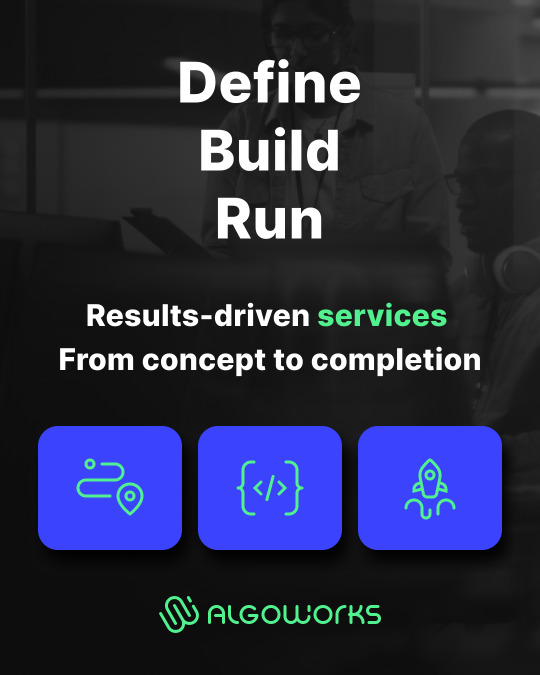
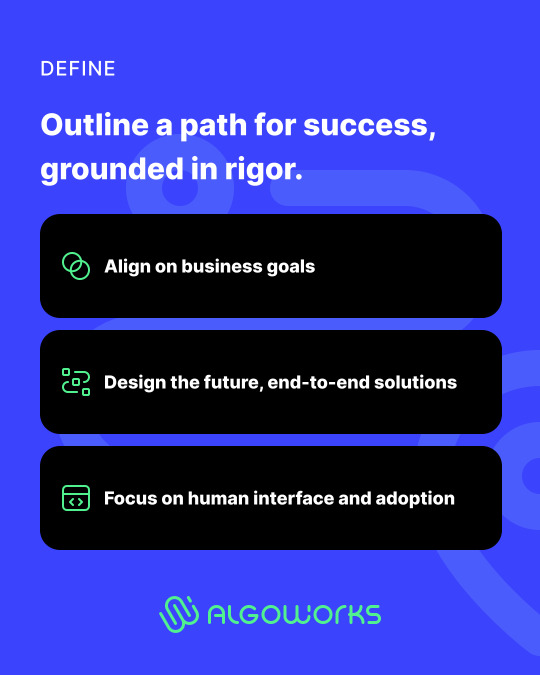

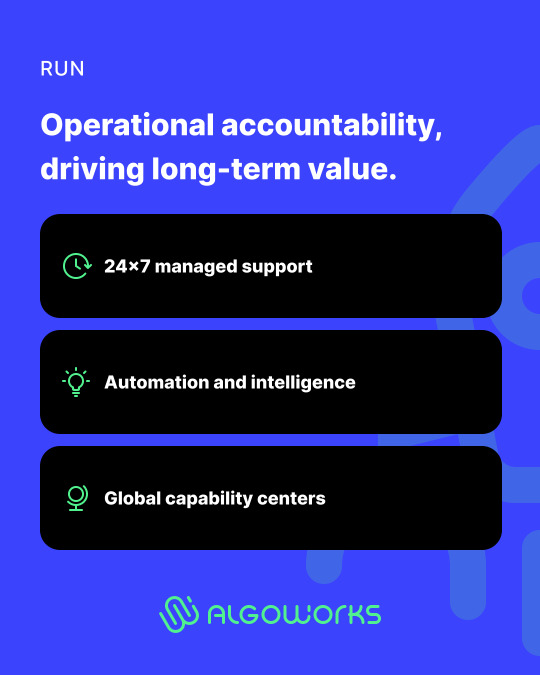
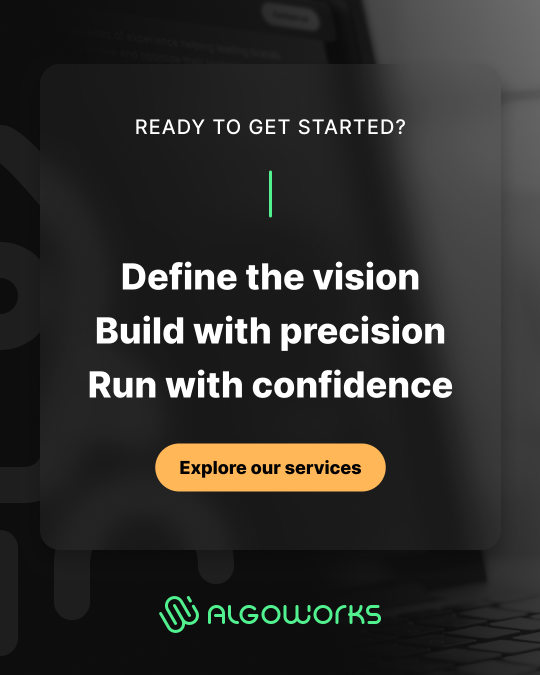
We follow our Define, Build, Run framework to execute flawlessly. From deep listening and 360° planning, to building with agile development and clean code, we ensure performance, security and return on investment through 24/7 monitoring and SLA-backed delivery.
Visit our website to learn more! https://www.algoworks.com/services/
#digital transformation#agile development#clean code#software engineering#cyber security#enterprise solutions#tech innovation#cloud services#innovations#technology#leadership#business excellence
1 note
·
View note
Text
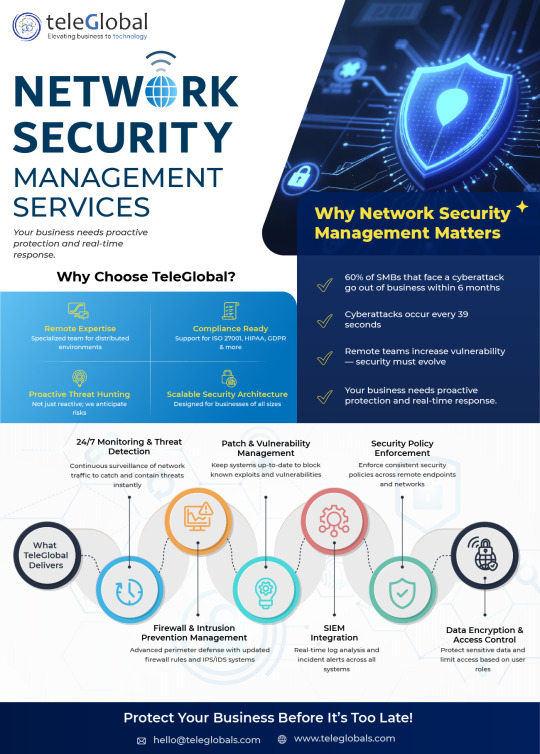
Network Management Services in Pune | Teleglobal
Empower Your Network for Efficient Performance From network setup and monitoring to firewalls and load balancer setup, we offer a secure, optimized, and high-performing network infrastructure. Our Network Management Services provides end-to-end solutions that boost network security, performance, and reliability, ensuring nothing interrupts connectivity of your business.
Optimize Your Network Today https://teleglobals.com/contact-us
#Network Management Services#Network Management#IT Infrastructure#Remote Monitoring#IT Support#Managed Services#Tech solutions#Digital Transformation#Cloud Computing#Cyber Security#Business Continuity
0 notes
Text
Empowering Digital Transformation with Advaiya’s Technology Consulting Services
In today’s rapidly evolving digital landscape, businesses must continually innovate to stay competitive. Whether it’s through optimizing operations, enhancing customer experiences, or embracing emerging technologies, digital transformation is no longer optional—it’s essential. This is where Advaiya, a leading technology consulting and implementation services company, steps in to empower businesses with strategic and scalable digital solutions.
Founded with a vision to bridge the gap between business needs and technology capabilities, Advaiya specializes in crafting customized digital strategies for enterprises of all sizes. With its deep expertise in Microsoft technologies, cloud solutions, data analytics, business intelligence consulting, website development services, and digital workplace solutions, Advaiya serves as a trusted partner to organizations aiming to streamline their operations and boost performance.

At the heart of Advaiya’s offerings is a commitment to aligning technology solutions with business goals. Instead of offering one-size-fits-all tools, the company collaborates closely with clients to understand their unique challenges, industry trends, and operational models. This client-centric approach ensures that the implemented technology isn’t just modern—but also meaningful and measurable in impact.
One of Advaiya’s core strengths lies in digital workplace transformation. As remote and hybrid work becomes the new norm, organizations need secure, scalable, and collaborative environments. Advaiya enables this through seamless integration of Microsoft 365, Teams, SharePoint, Power Platform, and other productivity tools, ensuring that employees remain connected, engaged, and productive no matter where they are.
Another significant focus area is business intelligence consulting. In a world driven by data, having access to real-time insights can be a game changer. Advaiya helps businesses harness the power of their data by building advanced dashboards, BI models, and AI-powered analytics. These tools empower leadership teams to make informed decisions faster and with greater confidence.
Additionally, Advaiya delivers comprehensive cloud solutions that support digital scalability and resilience. Whether migrating workloads to the cloud, implementing hybrid architectures, or enhancing cloud security and governance, Advaiya ensures organizations are future-ready and agile.
Beyond consulting, Advaiya is known for its hands-on implementation expertise. From cloud migrations and custom website development services to application modernization, workflow automation, and CRM integrations, the company ensures seamless execution and user adoption. Their agile methodologies and result-oriented processes help minimize disruption while maximizing return on investment.
Industries across finance, manufacturing, energy, healthcare, and retail have benefited from Advaiya’s technology-driven approach. Whether it’s improving operational efficiency, reducing costs, or enhancing customer engagement, Advaiya’s solutions are designed to deliver tangible business value.
What truly sets Advaiya apart is its dedication to innovation and learning. The company continually invests in training, research, and development to stay ahead of technological advancements. Its team of certified professionals brings a blend of technical skill and business acumen, ensuring every solution is robust, future-ready, and scalable.
In conclusion, Advaiya is more than just a technology service provider—it’s a digital transformation partner. By aligning cutting-edge technologies with strategic business objectives, Advaiya enables companies to accelerate growth, improve agility, and thrive in the digital age. For businesses seeking a reliable guide through their digital journey—whether it’s in cloud solutions, business intelligence consulting, or website development services—Advaiya offers the experience, expertise, and excellence that truly make a difference.
0 notes
Text
#cloud computing and security challenges#cloud migration challenges#cloud transformation solutions#integration of legacy platforms#it cloud services#legacy system integration
0 notes
Text
Migrating Legacy Contact Centers to Smart AI Solutions

Introduction
In an era dominated by digital transformation, businesses are rapidly shifting from traditional, on-premise contact center systems to smart, AI-powered platforms. This migration is not merely a trend—it’s a strategic imperative. Legacy contact centers, while once reliable, often struggle to keep up with the demands of modern customers who expect seamless, real-time, omnichannel support. Smart AI solutions offer a scalable, efficient, and intelligent approach to managing customer interactions while significantly improving the overall customer experience (CX).
Why Legacy Contact Centers Fall Short
Legacy contact centers were built to handle voice calls through physical infrastructure and manual workflows. These systems are rigid, expensive to maintain, and lack the flexibility needed for today’s fast-paced digital environment. Some key limitations include:
Limited scalability
High operational costs
Minimal integration with digital channels
Lack of real-time data analytics
Inability to support remote agents effectively
Moreover, legacy systems are often siloed, making it difficult to provide a unified customer experience across channels such as email, chat, social media, and messaging apps.
The Case for AI-Powered Contact Centers
AI contact centers leverage technologies like machine learning, natural language processing (NLP), and robotic process automation (RPA) to enhance and automate customer interactions. These platforms can intelligently route queries, provide self-service options, and analyze customer sentiment in real time.
Key benefits of migrating to a smart AI solution include:
Enhanced customer experience (CX) with personalized, context-aware interactions
24/7 availability through AI-powered virtual agents and chatbots
Omnichannel support that unifies communication across voice, email, chat, SMS, and social platforms
Cost savings through intelligent automation and reduced reliance on live agents
AI-driven analytics for better decision-making and performance optimization
Key Technologies Powering Smart AI Contact Centers
Natural Language Processing (NLP) NLP enables AI to understand and respond to human language more effectively. It powers chatbots, virtual assistants, and intelligent IVRs, making interactions more human-like and intuitive.
Machine Learning and Predictive Analytics Machine learning models analyze historical data to predict customer behavior, enabling proactive service and intelligent routing of interactions to the right agents or systems.
AI-Driven Automation Robotic process automation (RPA) handles repetitive tasks such as data entry, verification, and ticket generation, allowing agents to focus on complex issues.
Cloud-Based Infrastructure Modern AI contact centers are built on the cloud, enabling easy scalability, remote agent support, and seamless updates without downtime.
Speech Recognition and Sentiment Analysis These tools analyze tone and emotion during voice interactions, helping organizations adapt responses in real time to improve outcomes.
The Migration Journey: Key Steps and Best Practices
Migrating to a smart AI contact center requires strategic planning and execution. Here’s a high-level roadmap:
1. Assess Your Current State
Begin with a comprehensive audit of your existing contact center infrastructure, workflows, customer pain points, and technology stack. Identify gaps in CX, agent productivity, and system performance.
2. Define Your Objectives
Clearly define your goals—whether it's improving response times, enabling omnichannel support, or reducing costs through automation. These objectives will guide technology selection and implementation strategy.
3. Choose the Right AI Contact Center Platform
Look for platforms that offer:
Seamless cloud migration
Integration with your existing CRM and support systems
AI-powered virtual agents and intelligent routing
Real-time dashboards and AI-driven analytics
Security and compliance features
Top vendors include Amazon Connect, Google Cloud Contact Center AI, Genesys Cloud, and Five9.
4. Plan for Integration and Data Migration
Ensure that customer data, interaction history, and knowledge bases are migrated securely and accurately. APIs and middleware tools can help integrate legacy systems during the transition phase.
5. Train AI Models and Agents
Leverage historical interaction data to train your virtual assistants and automation tools. Concurrently, provide your human agents with training on new tools and AI-assisted workflows.
6. Monitor, Optimize, and Iterate
Post-migration, continuously monitor system performance, customer feedback, and agent productivity. Use AI-driven analytics to identify areas for improvement and adapt quickly.
Addressing Common Challenges
Data Privacy and Compliance: Ensure your new platform adheres to regulations such as GDPR, HIPAA, or PCI-DSS. AI systems should handle sensitive information responsibly.
Change Management: Prepare your team for the cultural shift. AI is meant to augment—not replace—human agents. Empower them with AI tools to work more efficiently.
Integration Complexity: Work with experienced technology partners or consultants who specialize in cloud migration and AI implementation to reduce friction during integration.
Real-World Impact: AI in Action
A leading telecom company replaced its legacy call center with a cloud-based AI solution. The results included:
35% reduction in average handling time (AHT)
50% increase in first contact resolution (FCR)
40% improvement in customer satisfaction (CSAT)
60% of queries handled by AI-powered virtual agents
This transformation not only enhanced operational efficiency but also empowered agents with real-time insights and support tools, allowing them to focus on high-value interactions.
The Future of AI Contact Centers
As generative AI and real-time voice synthesis continue to evolve, smart contact centers will become even more sophisticated. We can expect:
Hyper-personalized customer journeys driven by behavioral analytics
Real-time agent assist tools offering prompts and next-best actions
Voice bots with near-human conversational capabilities
Deeper integration with enterprise systems like ERP and sales platforms
The AI contact center is no longer a futuristic concept—it is today’s strategic advantage.
Conclusion
Migrating legacy contact centers to smart AI solutions is a transformative move that enables organizations to meet the demands of today’s digital-first customers. By embracing AI-powered tools, businesses can deliver superior customer experiences, improve operational efficiency, and gain a competitive edge.
This transition, while complex, can be managed effectively with the right strategy, technology, and partners. As AI continues to evolve, the future of customer engagement lies in intelligent, adaptive, and scalable contact center platforms.
#AI contact center#legacy contact center#customer experience (CX)#contact center migration#AI-powered contact center#intelligent automation#cloud contact center#natural language processing (NLP)#AI-driven analytics#omnichannel support#virtual agents#chatbots for contact centers#contact center modernization#machine learning in customer service#contact center cloud migration#smart contact center solutions#customer service automation#speech recognition AI#predictive analytics for CX#digital transformation in customer support
0 notes
Text
8 Digital Transformation Technologies and Their Business Impact
What are Digital Transformation Technologies?
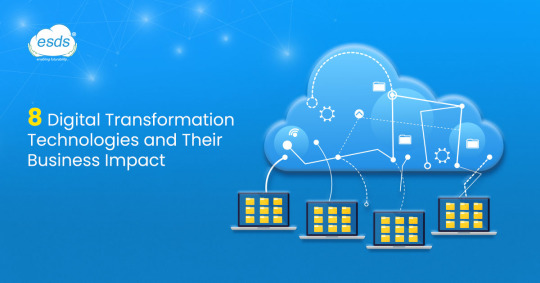
The digital transformation does not revolve around a particular technology. Any technology that enables a business to develop and produce better results can be included. We’ll discuss some cutting-edge technologies frequently employed in digital transformation initiatives—most initiatives use multiple of these technologies.
Organizational Digital Transformation
Although new technologies are essential to the digital transformation, they cannot function independently. Any organization going through a digital transformation needs to think about how its organizational culture, business models, and business processes will change.
Business processes transformation
In order to adapt to new corporate objectives, competition, and customer demands, existing processes and workflows must be modified. Business transformation is a subset of digital transformation, which assists an organization in creating a technical foundation that fosters growth and change.
Business Model Transformation
Business model transformation considers how value is produced in the sector and what new opportunities technology can create, whereas organization process transformation concentrates on the workflows and tasks carried out by the business in everyday operations. When a company model is transformed, it looks at new ways to serve the market to add value and boost performance.
Organizational and Cultural Transformation
In order for a digital transformation to be successful, it must be coordinated with the organization’s values and culture. It is crucial to gain employee support and foster trust in the company, its culture, and the digital endeavor. Lack of agreement regarding digital transformation may cause the adoption of new technology to be delayed or negative.
Top Digital Transformation Technologies
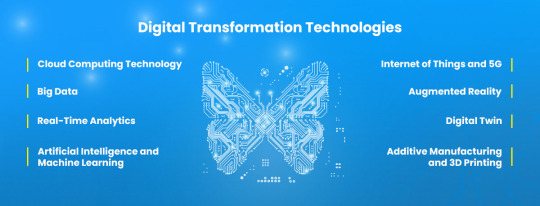
1. Cloud Computing Technology
The supply of computing services in a flexible and scalable manner, frequently but only sometimes using outside providers, is called cloud computing. Services offered by cloud computing can be divided into three groups:
Infrastructure as a Service (IaaS)
This category provides virtualized computing resources over the internet, such as virtual machines, storage, and networking.
Platform as a Service (PaaS)
This category provides a platform for developing, running, and managing applications and services without the need for managing the underlying infrastructure.
Software as a Service (SaaS)
This category provides access to software applications over the internet without needing installation or maintenance on the customer’s end. Examples include email services, customer relationship management (CRM) systems, and project management tools.
Cloud Computing is one of the key digital transformation technologies as it offers agility, scalability, and flexibility. Because traditional infrastructure is frequently insufficiently sophisticated, scalable, agile, and cost-effective to run the necessary digital infrastructure, the majority of digital transformation initiatives make use of Cloud Computing.
2. Artificial Intelligence and Machine Learning
The goal of��machine learning and artificial intelligence (AI/ML) is to simulate human cognitive processes. Expert systems, natural language processing, computer vision, predictive analytics, and speech recognition are some examples of specific artificial intelligence applications.
Digital Transformation initiatives heavily rely on AI/ML as part of new business strategies. These are essential Digital Transformation technologies for enhancing productivity as well as for making better use of the data that companies gather. Businesses may build creative ideas and better products and services by gaining actionable insights from data.
3. Big Data
Data is regarded as the pulse of the modern economy and is a valuable asset for the majority of enterprises. This has resulted in exponential expansion, which is both a challenge and an opportunity for any organization. This growth is only anticipated to continue in the upcoming years. Big data can contain structured, semi-structured, and unstructured data that was gathered by businesses as part of routine business operations, from customers, or from outside sources. Predictive modelling, data mining, and other sorts of data analytics can all be done with this data. Organizations may handle massive amounts of data, extract information pertinent to the business, develop strategic models, and make decision-based on data by applying big data analytics.
4. Real-Time Analytics
As soon as data enters the system, it is analysed in real-time using relevant resources. The ability to act on data in a fashion that users perceive as instantaneous is referred to as “real-time.” Real-time data delivery from operational systems is made possible by streaming data architectures, which also make use of powerful analytics engines and facilitate quick operational decisions. Robotic process automation (RPA) and other types of automated policy enforcement can execute these choices and hence Real Time Analytics is a major Digital Transformation technology.
5. Internet of Things and 5G
The Internet of Things (IoT) is a network of computers, machines, and other items that can communicate with one another and share data. They frequently have the ability to operate without supervision from a person or a traditional computer system. The Internet of Things requires more bandwidth, faster transmission speeds, and flawless connections, which 5G technology can provide. For instance, as part of their digital transformation, the majority of the world’s big cities have set up a network of IoT sensors, many of which are connected by 5G. Digital transformation in the manufacturing sector is being driven by the Industrial Internet of Things (IIoT), often known as Industry 4.0. With the use of this technology, organizations may enhance workflows and boost flexibility, innovation, speed, and quality.
IoT plays a key role in enhancing customer satisfaction in the retail sector by offering insightful data on how customers buy and use products. Wearable technology and portable medical equipment that may be used in patients��� homes or physically attached to them make telemedicine possible in the healthcare industry.
6. Augmented Reality
Digital information is connected to a visual user experience using augmented reality (AR). Instead of creating a fully manufactured environment like virtual reality does, augmented reality uses an existing environment and adds new information on top of it.
A company can use AR for both employee tasks and consumer interactions. The system increases productivity, facilitates knowledge transfer, improves training, and provides superior customer service. With it, technology will be more intuitively used, and we will interact with digital systems differently.
7. Digital Twin
A digital twin is a technology that connects the digital and physical worlds. Virtual representations of physical objects are called digital twins.
The real object has a number of sensors connected to significant functional regions. These sensors produce data on a range of performance metrics for an object, including energy output, temperature, and environmental variables. After that, a processing system receives the data and applies it to the digital copy.
As a result, businesses can utilize the virtual model to run simulations, look into performance problems, and even make adjustments. The goal is to provide insightful discoveries that can be applied to the actual physical thing.
Applications of digital twins include:
Industrial Equipment Monitoring: Monitoring the performance and condition of industrial equipment in real-time to predict and prevent failures.
Smart Buildings: Creating virtual models of buildings to optimize their design, energy consumption, and maintenance.
Healthcare: Digital twins in healthcare can help simulate and analyze patient-specific data to improve patient outcomes.
Supply Chain Management: Optimizing supply chain operations by creating virtual models of the entire supply chain to identify inefficiencies and bottlenecks.
Urban Planning: Creating virtual models of cities to simulate and analyze different scenarios to improve urban planning and decision-making.
Automotive: Digital twins can be used in the automotive industry to simulate and test the design, performance, and reliability of vehicles before they are manufactured.
8. Additive Manufacturing and 3D Printing
Additive Manufacturing (AM) and 3D Printing are key digital transformation technologies that allow the creation of physical objects by building them up layer by layer, rather than by subtracting material as in traditional manufacturing processes. This enables greater design freedom, reduced waste, and faster production times.
3D Printing has a wide range of applications, from prototyping and product design to the creation of end-use parts in industries such as aerospace, healthcare, and consumer goods. The use of AM and 3D Printing is growing rapidly due to advances in materials, software, and hardware, making it possible to produce complex and high-performance parts.
By combining digital design and production processes, AM and 3D Printing are transforming traditional manufacturing methods and enabling new business models, such as on-demand production and local or decentralized production. This technology is also contributing to the Fourth Industrial Revolution by enabling the development of the Internet of Things (IoT), Industry 4.0, and the integration of digital and physical systems.
Cloud Computing – The First Step Towards Digital Transformation
Cloud computing is the key element of digital transformation, elevating it beyond the adoption stage and incorporating the tools, rebuilding process, and experience of a virtual environment. An organization must implement a cloud-first or hybrid cloud management strategy if it wants to accomplish its objectives and ensure its long-term viability.

By utilizing cloud computing, eNlight Cloud enables organizations to access the resources they need, when they need them, with the flexibility and scalability to meet the demands of their business. This results in reduced IT costs, improved operational efficiency, and increased business agility.
eNlight Cloud also supports various deployment models, including public, private, and hybrid clouds, allowing organizations to choose the deployment model that best suits their needs. The platform also offers a range of security features, such as encryption, data protection, and access control, to ensure the protection of sensitive data.
Overall, eNlight Cloud is a powerful cloud transformation solution that helps organizations modernize their IT infrastructure, increase efficiency, and improve their overall competitiveness in the digital economy.
0 notes
Text

Automate and streamline proficiency testing in your laboratory using our Dubai-based solution, ideal for lab assessments across the GCC. Visit: https://lqms.net/
0 notes
Text
Data Unbound: Embracing NoSQL & NewSQL for the Real-Time Era.
Sanjay Kumar Mohindroo Sanjay Kumar Mohindroo. skm.stayingalive.in Explore how NoSQL and NewSQL databases revolutionize data management by handling unstructured data, supporting distributed architectures, and enabling real-time analytics. In today’s digital-first landscape, businesses and institutions are under mounting pressure to process massive volumes of data with greater speed,…
#ACID compliance#CIO decision-making#cloud data platforms#cloud-native data systems#column-family databases#data strategy#data-driven applications#database modernization#digital transformation#distributed database architecture#document stores#enterprise database platforms#graph databases#horizontal scaling#hybrid data stack#in-memory processing#IT modernization#key-value databases#News#NewSQL databases#next-gen data architecture#NoSQL databases#performance-driven applications#real-time data analytics#real-time data infrastructure#Sanjay Kumar Mohindroo#scalable database solutions#scalable systems for growth#schema-less databases#Tech Leadership
0 notes
Text

Experience GITEX Europe 2025: AI, Healthtech & Custom Software Development Solutions
Explore the future of Healthtech, AI, and custom software development at GITEX Europe 2025 in Berlin. Join 40,000+ tech leaders and discover cutting-edge innovations, including AR/VR, cybersecurity, cloud, and healthcare IT. Visit DreamSoft4u’s booth for next-gen software services and intelligent digital solutions.
#GITEX Europe 2025#custom software development#Healthtech#AI in healthcare#AI development services#healthcare IT solutions#DreamSoft4u#Messe Berlin tech expo#custom application development#software development company#XR technology#cybersecurity solutions#quantum computing#cloud computing#smart industries#tech expo Europe#digital transformation#software services#healthcare software development#generative AI#AR/VR in healthcare#sustainable tech#digital health solutions#custom healthcare software#AI-powered software#technology trends 2025
1 note
·
View note
Text
Highest Paying IT Jobs in India in 2025: Roles, Skills & Salary Insights
Published by Prism HRC – Best IT Job Consulting Company in Mumbai
India's IT sector is booming in 2025, driven by digital transformation, the surge in AI and automation, and global demand for tech talent. Whether you're a fresher or a seasoned professional, knowing which roles pay the highest can help you strategize your career growth effectively.
This blog explores the highest-paying IT jobs in India in 2025, the skills required, average salary packages, and where to look for these opportunities.

Why IT Jobs Still Dominate in 2025
India continues to be a global IT hub, and with advancements in cloud computing, AI, cybersecurity, and data analytics, the demand for skilled professionals is soaring. The rise of remote work, startup ecosystems, and global freelancing platforms also contributes to higher paychecks.
1. AI/ML Engineer
Average Salary: ₹20–40 LPA
Skills Required:
Python, R, TensorFlow, PyTorch
Deep learning, NLP, computer vision
Strong statistics and linear algebra foundation
Why It Pays Well:
Companies are pouring investments into AI-powered solutions. From chatbots to autonomous vehicles and predictive analytics, AI specialists are indispensable.
2. Data Scientist
Average Salary: ₹15–35 LPA
Skills Required:
Python, R, SQL, Hadoop, Spark
Data visualization, predictive modelling
Statistical analysis and ML algorithms
Why It Pays Well:
Data drives business decisions, and those who can extract actionable insights are highly valued. Data scientists are among the most sought-after professionals globally.
3. Cybersecurity Architect
Average Salary: ₹18–32 LPA
Skills Required:
Network security, firewalls, encryption
Risk assessment, threat modelling
Certifications: CISSP, CISM, CEH
Why It Pays Well:
With rising cyber threats, data protection and infrastructure security are mission critical. Cybersecurity pros are no longer optional—they're essential.
4. Cloud Solutions Architect
Average Salary: ₹17–30 LPA
Skills Required:
AWS, Microsoft Azure, Google Cloud
Cloud infrastructure design, CI/CD pipelines
DevOps, Kubernetes, Docker
Why It Pays Well:
Cloud is the backbone of modern tech stacks. Enterprises migrating to the cloud need architects who can make that transition smooth and scalable.
5. Blockchain Developer
Average Salary: ₹14–28 LPA
Skills Required:
Solidity, Ethereum, Hyperledger
Cryptography, smart contracts
Decentralized app (dApp) development
Why It Pays Well:
Beyond crypto, blockchain has real-world applications in supply chain, healthcare, and fintech. With a limited talent pool, high salaries are inevitable.
6. Full Stack Developer
Average Salary: ₹12–25 LPA
Skills Required:
Front-end: React, Angular, HTML/CSS
Back-end: Node.js, Django, MongoDB
DevOps basics and API design
Why It Pays Well:
Full-stack developers are versatile. Startups and large companies love professionals who can handle both client and server-side tasks.
7. DevOps Engineer
Average Salary: ₹12–24 LPA
Skills Required:
Jenkins, Docker, Kubernetes
CI/CD pipelines, GitHub Actions
Scripting languages (Bash, Python)
Why It Pays Well:
DevOps reduces time-to-market and improves reliability. Skilled engineers help streamline operations and bring agility to development.
8. Data Analyst (with advanced skillset)
Average Salary: ₹10–20 LPA
Skills Required:
SQL, Excel, Tableau, Power BI
Python/R for automation and machine learning
Business acumen and stakeholder communication
Why It Pays Well:
When paired with business thinking, data analysts become decision-makers, not just number crunchers. This hybrid skillset is in high demand.

9. Product Manager (Tech)
Average Salary: ₹18–35 LPA
Skills Required:
Agile/Scrum methodologies
Product lifecycle management
Technical understanding of software development
Why It Pays Well:
Tech product managers bridge the gap between engineering and business. If you have tech roots and leadership skills, this is your golden ticket.
Where are these jobs hiring?
Major IT hubs in India, such as Bengaluru, Hyderabad, Pune, Mumbai, and NCR, remain the hotspots. Global firms and unicorn startups offer competitive packages.
Want to Land These Jobs?
Partner with leading IT job consulting platforms like Prism HRC, recognized among the best IT job recruitment agencies in Mumbai that match skilled candidates with high-growth companies.
How to Prepare for These Roles
Upskill Continuously: Leverage platforms like Coursera, Udemy, and DataCamp
Build a Portfolio: Showcase your projects on GitHub or a personal website
Certifications: AWS, Google Cloud, Microsoft, Cisco, and niche-specific credentials
Network Actively: Use LinkedIn, attend webinars, and engage in industry communities
Before you know
2025 is shaping up to be a landmark year for tech careers in India. Whether you’re pivoting into IT or climbing the ladder, focus on roles that combine innovation, automation, and business value. With the right guidance and skillset, you can land a top-paying job that aligns with your goals.
Prism HRC can help you navigate this journey—connecting top IT talent with leading companies in India and beyond.
- Based in Gorai-2, Borivali West, Mumbai - www.prismhrc.com - Instagram: @jobssimplified - LinkedIn: Prism HRC
#Highest Paying IT Jobs#IT Jobs in India 2025#Tech Careers 2025#Top IT Roles India#AI Engineer#Data Scientist#Cybersecurity Architect#Cloud Solutions Architect#Blockchain Developer#Full Stack Developer#DevOps Engineer#Data Analyst#IT Salaries 2025#Digital Transformation#Career Growth IT#Tech Industry India#Prism HRC#IT Recruitment Mumbai#IT Job Consulting India
0 notes